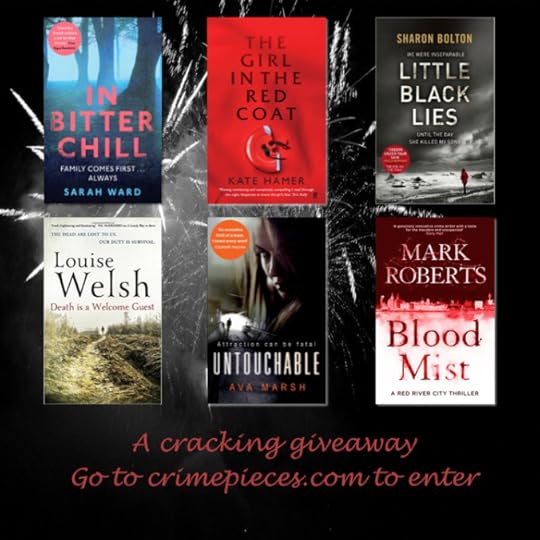Sarah Ward's Blog, page 21
November 18, 2015
Review: Bill Rogers – Angel Meadow
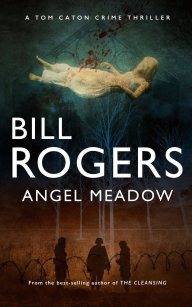 Angel Meadows is the tenth book in the Manchester series by Bill Rogers so I’ve come late to this particular writer. However I was looking forward to reading a crime story set in my home city of Manchester especially as the author takes so much care to use authentic locations. Angel Meadow is the site of one of the most notorious Victorian slums which has now become a public park near the city centre. It’s the setting for a murder of one of the city’s prostitutes known as Irish Meg. DCI Tom Caton takes on the investigation but soon discovers that the girl from an ordinary Oldham family has a more horrific past linked to the Troubles in Northern Ireland. DCI Caton and his partner travel to the area to discover the tragedy that led to two sister’s being adopted far from home but soon those complicit in the cover-up begin to turn up dead.
Angel Meadows is the tenth book in the Manchester series by Bill Rogers so I’ve come late to this particular writer. However I was looking forward to reading a crime story set in my home city of Manchester especially as the author takes so much care to use authentic locations. Angel Meadow is the site of one of the most notorious Victorian slums which has now become a public park near the city centre. It’s the setting for a murder of one of the city’s prostitutes known as Irish Meg. DCI Tom Caton takes on the investigation but soon discovers that the girl from an ordinary Oldham family has a more horrific past linked to the Troubles in Northern Ireland. DCI Caton and his partner travel to the area to discover the tragedy that led to two sister’s being adopted far from home but soon those complicit in the cover-up begin to turn up dead.
The story is completely absorbing and had me transfixed. I ended up reading the book late into the night. Particularly fascinating was how well the author combined the Manchester investigation with a historic crime that still had a resonance today. Tom Caton is an interesting detective. His partner is expecting a child and the fact I’ve not read earlier books didn’t impinge on my enjoyment of reading about his domestic life.
I’d recommend Angel Meadow to all readers who love a gripping police procedural with a well crafted tale. I’d love to go back and read the series from the start.
Thanks to the author for sending me a copy of his book.


November 10, 2015
US Noir – Cal Moriarty and Rod Reynolds
cI wanted to read some novels set in the US while I was attending the Bouchercon crime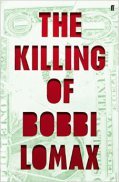 convention in North Carolina. The Killing of Bobbi Lomax by Cal Moriarty and Rod Reynolds’ The Dark Inside had both been sitting on my shelf for a while and were both excellent choices to take away with me. There are themes common to both books but each writer has a very distinctive voice. Reading a novel set in country that you’re visiting can add depth to your travelling experience and I was amazed at the extent to which the writers had captured the flavour of the country.
convention in North Carolina. The Killing of Bobbi Lomax by Cal Moriarty and Rod Reynolds’ The Dark Inside had both been sitting on my shelf for a while and were both excellent choices to take away with me. There are themes common to both books but each writer has a very distinctive voice. Reading a novel set in country that you’re visiting can add depth to your travelling experience and I was amazed at the extent to which the writers had captured the flavour of the country.
In The Killing of Bobbi Lomax a series of bombs have exploded in Abraham City. It’s a clever ploy on Moriarty’s part to look at the investigation following these explosions rather than detail the actual violence. Bobbi Lomax is a prom queen who married a man much older than her. The connection between her and the other victims is initially unclear and forms the basis of the investigation. It’s a very well written book and the 1980s setting and ambiguity over location (Abraham City is within America’s bible belt and represents a kind of US every-town) give the book an other-worldy theme that reflects the eventual revelation regarding the motives behind the killings.
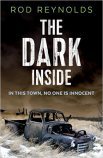 In Rod Reynolds book, The Dark Inside, Texerkana’s location on the border between Texas and Arkansas plays an important role in the narrative. New York reporter Charlie Yates is sent down to investigate a series of murders of courting couples. The killings are based on a real life murder spree and the horror experienced by the victims and their families is highlighted. There’s a corrupt heart to the town but Yates is unable to locate its source which adds to the narrative tension. Reynolds is excellent at characterisation and we’ll hopefully get to see more of Charlie Yates is future books.
In Rod Reynolds book, The Dark Inside, Texerkana’s location on the border between Texas and Arkansas plays an important role in the narrative. New York reporter Charlie Yates is sent down to investigate a series of murders of courting couples. The killings are based on a real life murder spree and the horror experienced by the victims and their families is highlighted. There’s a corrupt heart to the town but Yates is unable to locate its source which adds to the narrative tension. Reynolds is excellent at characterisation and we’ll hopefully get to see more of Charlie Yates is future books.
It was fascinating to see British authors bring to life these US locations and I sent both authors some questions as I was interested to how these books came into being.
You’re both UK based authors who bring alive a small town US setting in your books. What made you choose your setting and how much research did you do before you wrote your novels?
CM: I love the desert, I lived in L.A. for a few years and have driven across the desert many times. I also spent a month there researching my novel. I love the fact that the desert isolates and amplifies characters and events and I really wanted to include that in the novel.
RR: The Dark Inside is based on a real life serial killer case, so in some ways I had to set the book in Texarkana, where the murders took place. I decided early on in the writing that my story would be fictional, and not adhere too closely to the facts of the case, so as a balance to that, I was determined to keep Texarkana as the setting, and bring it to life as vividly as possible. I thought that was the best way to ground the novel in reality, and maintain a link to the real life events.
I did a lot of research before I started writing, firstly into the case, and then into Texarkana itself; Google Maps was a godsend early on! The more I learnt about the town, the more certain I was in my decision to set the book there. Texarkana is, in actuality, two towns, one in Texas, one in Arkansas, split down the middle by the state line. It was a major railroad hub for troops returning from WWII, so the town was overrun with GIs in 1946. It’s not quite a typical southern town, and still had something of a western character in the 1940s – bar fights were as common as picket fences. All these elements made for an atmospheric backdrop to the novel.
The final piece of the research puzzle was to visit the town, which I did as I approached the end of writing the first draft. It was a strange feeling to see Texarkana first-hand, after spending so long studying the town and its history. Much of the town as it was in the 1940s is still standing, many of the buildings now abandoned, so it was fascinating to see – almost like a living snapshot of that time and place.
You write about familiar themes in a distinctive way – Cal, in relation to religious faith and Rod, on serial killings. How conscious were you that you needed to bring something fresh to these subjects?
CM: I really wanted to create something quirky, but also intelligent and as multi-layered as possible. So that at no time were people being told what to think, they were being given enough to draw their own conclusions.
RR: I was very conscious of the fact, as serial killers have, of course, been done many times before. However, I had an idea for a twist on the standard serial killer ending before I started writing, so I was always working towards that plot point as the book developed. I was partly inspired by David Peace’s Red Riding books, as I loved the way he put a fresh and intriguing spin on serial murders, so I was always keen to try to do the same in my novel.
What made you decide on your points of view? – Cal you have multiple narrators and timescales, whereas Rod you use the voice of your protagonist Charlie Yates.
CM: Because Clark Houseman is such an engaging, alluring character it was important so that the reader could see the other half of the story, the investigation, and see more of this strange unusual town, that the cops were also outsiders, the readers eyes into the story, but not particularly welcome eyes as we learn in the novel. Marty also has his own ghosts which are revealed in this book, and form the focus of this next novel I’m working on. I had to use different timescales, so I could build up the character of Clark Houseman — it’s his story that starts earlier than the novel’s inciting incident.
RR: My favourite books tend to have very tight POV control, limiting it to one or maybe a couple of characters, and restricting information so that the reader only knows as much as the protagonists. I find that a very effective way to build tension, and to make the twists and reveals more explosive; hence I decided to write Charlie as the only character with a POV.
In addition, I thought that approach would work particularly well with this story as it has elements of the classic ‘a stranger arrives in a strange town’ plot, so I wanted the reader to discover Texarakna and the story of the murders as Charlie does. Moreover, I wanted the reader to understand Charlie’s perspective, the way he gets drawn into the murders against his better judgement, his path to redemption, and, finally his intense obsession with getting to the truth – so it was important to me that the reader stick with him throughout.
What’s next? I’d happily revisit both locations/characters but have their stories been told?
CM: The next novel in the Wonderland series, of which Bobbi Lomax is book 1. There’s a lifetime of stories to be told from Abraham City’s townsfolk. Next up is Marty’s daughter, Liss, and a man who may or may not be a serial killer. The novel’s told from both their point of view. It’s called Death in Wonderland. It’s a prequel to Bobbi Lomax.
RR: Book 2 has just gone to Faber, so I’m anxiously awaiting the first edits on that. It’s a sequel to The Dark Inside, set six months after. Charlie Yates is back, but it’s set in a little town in Arkansas called Hot Springs, which has an incredible history of its own, involving famous mobsters, illegal gambling and dirty politics. It’s a fascinating place in real life, and quite quaint and picturesque now, but it’s not hard to imagine it as it was in the 1940s, and the nightmarish scenario of murders and corruption that Charlie finds himself in the middle of – a scene that only becomes more sinister when he realises that the past he’s trying to forget, isn’t done with him yet…


November 5, 2015
Competition: Win Six Thrilling Reads
It’s Guy Fawkes Day today in the UK which also coincides with the paperback release of In Bitter Chill. To celebrate, I’m giving away a signed copy of the book alongside five cracking crime novels that I’ve read this year.
One of the nicest things about Crimepieces is that it has an international readership who have been with me since I started blogging in 2011. So the competition is open to everyone regardless of geographic location. All you need to do is fill your name and e-mail address or, of you’d prefer, your Twitter name in the contact form below. The competition runs until 6pm on Sunday.
Thanks to all the readers of Crimepieces for your support since hardback publication in July. Your reviews, comments, e-mails and Tweets have been a great source of encouragement.
Sarah
****This competition is now closed. Thanks to all for entering. The winner is Hemmie Martin. Congratulations to her and I hope she enjoys the six books. Another competition is coming in December.****


October 31, 2015
October Reading Round-Up
October has been a busy month for me reading wise and there are a couple of reviews coming shortly of books by Cal Moriarty, Rod Reynolds and Bill Rogers. I’ve been travelling which has also given me the opportunity to catch up with some crime novels that I’ve been dying to read for ages all of which I’d recommend to readers of this blog.
Louise Welsh is an excellent writer whom I’ve admired for a long time. I’ve an enduring fascination with end-of-the-world scenarios ever since I read Nevil Shute’s On the Beach as a teenager. Death is Welcome Guest is the story of Magnus Fall who flees London trying to reach is family on a remote Scottish island as the plague sickness descends on the country. He reaches a commune governed by a rigid set of rules where the primary aim is to survive. Welsh is excellent at plotting and the novel is a gripping read about desperation and religious doubt.
fascination with end-of-the-world scenarios ever since I read Nevil Shute’s On the Beach as a teenager. Death is Welcome Guest is the story of Magnus Fall who flees London trying to reach is family on a remote Scottish island as the plague sickness descends on the country. He reaches a commune governed by a rigid set of rules where the primary aim is to survive. Welsh is excellent at plotting and the novel is a gripping read about desperation and religious doubt.
 Another author who is a ongoing favourite of mine is Sharon Bolton. Little Black Lies is set in the Falkland Islands and this is the first time I’ve read a murder story set in this part of the world. It’s an agonising tale of lost children – Caitlin’s two son’s were accidentally killed while in the care of her best friend, Rachel. Now children have started to go missing on the island. It’s a page-turning read and brings to life the tensions of a small isolated community.
Another author who is a ongoing favourite of mine is Sharon Bolton. Little Black Lies is set in the Falkland Islands and this is the first time I’ve read a murder story set in this part of the world. It’s an agonising tale of lost children – Caitlin’s two son’s were accidentally killed while in the care of her best friend, Rachel. Now children have started to go missing on the island. It’s a page-turning read and brings to life the tensions of a small isolated community.
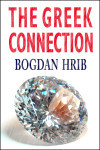 I met Romanian author and publisher Bogdan Hrib at last year’s Iceland Noir. One of his novels, The Greek Connection, has recently been published by Mosaic Press. It’s a short but dynamic novel full of menace and set in a country I know well, Greece. The plot is dialogue driven and I was impressed how well the writer moves the narrative forward using sharp exchanges between the characters.
I met Romanian author and publisher Bogdan Hrib at last year’s Iceland Noir. One of his novels, The Greek Connection, has recently been published by Mosaic Press. It’s a short but dynamic novel full of menace and set in a country I know well, Greece. The plot is dialogue driven and I was impressed how well the writer moves the narrative forward using sharp exchanges between the characters.
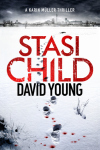 Stasi Child by David Young is his debut novel set in 1975 East Berlin featuring the charismatic head of the murder squad. Karin Muller. She’s investigating the killing of a teenage girl but her own personal life comes under scrutiny when her husband is arrested and her enquiries impinge on the machinations of East Berlin’s elite. It’s an excellent read with a strong sense of place and I’m sure the start of an exciting career for the author.
Stasi Child by David Young is his debut novel set in 1975 East Berlin featuring the charismatic head of the murder squad. Karin Muller. She’s investigating the killing of a teenage girl but her own personal life comes under scrutiny when her husband is arrested and her enquiries impinge on the machinations of East Berlin’s elite. It’s an excellent read with a strong sense of place and I’m sure the start of an exciting career for the author.


October 19, 2015
Scandi Crime Fiction Round-Up
I’ve been on a big reading binge recently mainly due to long distance travel to Bouchercon, the US crime fiction convention. I’m going to do a series of round-ups of the next week or so as I have read some excellent books that I want to share with you.
Regular readers of this blog will know that I’m one of the judges for the Petrona Award for translated Scandinavian crime fiction. It’s usually around this time of year that I start to increase my Nordic Noir consumption to make sure I get my reading done in time for the judging in March.
 Yrsa Sigurdardottir’s The Undesired is a standalone novel that looks at the historic abuse in a juvenile detention centre. A single father, Odinn is in charge of the investigation following the unexplained death of a colleague. He finds a disturbing link to an accident that killed his former wife and is forced to look behind the official files to discover the reason for the children’s deaths. Yrsa is a master of ramping up the tension in her books and here is no exception. I particularly liked the claustrophobic nature of the setting and the gradual revealing of the horror at the heart of the killings.
Yrsa Sigurdardottir’s The Undesired is a standalone novel that looks at the historic abuse in a juvenile detention centre. A single father, Odinn is in charge of the investigation following the unexplained death of a colleague. He finds a disturbing link to an accident that killed his former wife and is forced to look behind the official files to discover the reason for the children’s deaths. Yrsa is a master of ramping up the tension in her books and here is no exception. I particularly liked the claustrophobic nature of the setting and the gradual revealing of the horror at the heart of the killings.
Stallo by Stefan Spjut is a fantastical tale that chronicles the abduction of children my  mysterious creatures. Susso runs a website dedicated to sightings of these beings and when she receives news of a creature that has been spotted outside an old woman’s house she installs a camera to see if she can finally confirm their existence. The book is a meaty tale that will delight fans of writers such as Justin Cronin. It’s a mixture of crime and fantasy and I thought the translation to be excellent.
mysterious creatures. Susso runs a website dedicated to sightings of these beings and when she receives news of a creature that has been spotted outside an old woman’s house she installs a camera to see if she can finally confirm their existence. The book is a meaty tale that will delight fans of writers such as Justin Cronin. It’s a mixture of crime and fantasy and I thought the translation to be excellent.
 Kati Hiekkapelto’s The Hummingbird was shortlisted for last year’s Petrona Award. Her follow-up The Defenceless is also a powerful read tackling illegal immigration and the role of gang members in exacerbating the desperation of migrant workers. Hiekkapelto is unflinching in her chilling descriptions and, once more, it is her police investigator protagonist, Anna Fekete, who dominates the narrative.
Kati Hiekkapelto’s The Hummingbird was shortlisted for last year’s Petrona Award. Her follow-up The Defenceless is also a powerful read tackling illegal immigration and the role of gang members in exacerbating the desperation of migrant workers. Hiekkapelto is unflinching in her chilling descriptions and, once more, it is her police investigator protagonist, Anna Fekete, who dominates the narrative.
Thanks to Hodder, Faber and Orenda Books for my review copies.


October 7, 2015
Review: David Lagercrantz – The Girl in the Spider’s Web
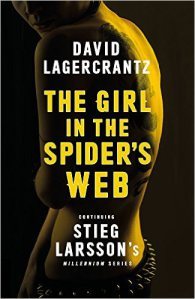 Here’s a book that I viewed with mixed feelings. I’m not greatly enamoured of writers taking on the characters of other authors and I tend to give the books a miss. I made an exception for The Girl in the Spider’s Web for a number of reasons. Firstly I enjoyed Lagercrantz’s Fall of Man in Wilmslow that was published earlier this year and think he certainly knows hows to tell a good story. I also wanted to give the book a fair assessment for the 2016 Petrona Award for which, as a Scandinavian translated crime novel, it’s eligible. And I wasn’t disappointed. I thought the book to be a decent crime novel that, in my opinion, is better than the last of Larsson’s trilogy, The Girl Who Kicked the Hornet’s Nest.
Here’s a book that I viewed with mixed feelings. I’m not greatly enamoured of writers taking on the characters of other authors and I tend to give the books a miss. I made an exception for The Girl in the Spider’s Web for a number of reasons. Firstly I enjoyed Lagercrantz’s Fall of Man in Wilmslow that was published earlier this year and think he certainly knows hows to tell a good story. I also wanted to give the book a fair assessment for the 2016 Petrona Award for which, as a Scandinavian translated crime novel, it’s eligible. And I wasn’t disappointed. I thought the book to be a decent crime novel that, in my opinion, is better than the last of Larsson’s trilogy, The Girl Who Kicked the Hornet’s Nest.
A famous Swedish scientist, Professor Balder, contacts investigative journalist Mikhael Blomkvist, to say his life is in danger from a group who call themselves the Spiders and he want’s Millenium, Blomkvist’s newspaper, to publish the story. The professor reveals he has been working with Lisbeth Salander to discover what computer files are available to back up his story. But Salander has her own mission, to hack into the US National Security Agency to discover the whereabouts of her sister who is still trying to kill her.
The characters of Blomkvist and Salander are immediately recognisable as Larsson’s creations. Once more, it’s Salander who dominates the narrative although Lagercrantz does try to give the character extra depth by showing the pain and conflict having a murderous sibling can bring. The other compelling character is Balder’s autistic son who is witness to a horrific act. The story of professionals attempting to tease out details of the criminals from his mind is never trite and detailed with subtlety.
It’s clear that this is a book written after the success of the trilogy. Salander has been described by commentators as a modern day super-hero and Lagercrantz picks up on this and develops the motif. But, apart from a dip in the middle of an admittedly long book, the action goes at a fair pace. It’s a worthy successor to Larsson’s work and a very enjoyable read.
Thanks to Quercus for my review copy.


September 23, 2015
Review: Mark Roberts – Blood Mist
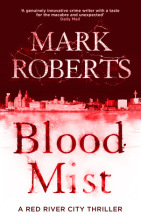 It’s always fascinating to read a crime story set in a city you know well. I lived in Liverpool in the 1990s and, although I’m sure the city has changed considerably, many of the places mentioned in Blood Mist were instantly recognisable. Mark Roberts is a writer I haven’t come across before but I was sent his book to review by publisher Head of Zeus. It’s a high quality crime novel, well written with some very good twists in the plot.
It’s always fascinating to read a crime story set in a city you know well. I lived in Liverpool in the 1990s and, although I’m sure the city has changed considerably, many of the places mentioned in Blood Mist were instantly recognisable. Mark Roberts is a writer I haven’t come across before but I was sent his book to review by publisher Head of Zeus. It’s a high quality crime novel, well written with some very good twists in the plot.
A family is massacred in a Liverpool suburb and DCI Eve Clay leads the investigation into the killings. There is a ritualistic feel to the slaughter and, when another family is killed, police hunt for a link between the victims. In a nearby high security mental facility, a patient demands to see Eve and claims that what he has previously prophesied is now occurring.
Blood Mist takes the relatively well worn theme of religious mania and gives a realistic context. A suburban setting with its quotidian normality is contrasted with the extreme nature of first the killings and then the dogma behind them. Children are presented as possibly complicit in the crimes which adds an air of unreality but also of primeval fear. How bad can children possibly be?
Eve Clay is given an interesting back story which I’m sure will be explored in future books. I’m looking forward to reading more from this author and to further installments in what promises to be an excellent series.


September 7, 2015
Review: Liza Marklund – Without a Trace
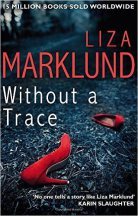 Swedish journalist Annika Bengtzon is one of my favourite investigators in modern crime fiction. She’s the principal reason that I read Liza Marklund’s books because, as a character, Annika is so believable. As readers we’ve been taken through a series of failed romances, childbirth, house disasters and work traumas. Annika has remained the same person throughout: tenacious and brave. It’s always a pleasure to revisit her and I’m sorry that we’re nearing the end of the series.
Swedish journalist Annika Bengtzon is one of my favourite investigators in modern crime fiction. She’s the principal reason that I read Liza Marklund’s books because, as a character, Annika is so believable. As readers we’ve been taken through a series of failed romances, childbirth, house disasters and work traumas. Annika has remained the same person throughout: tenacious and brave. It’s always a pleasure to revisit her and I’m sorry that we’re nearing the end of the series.
In Without a Trace, Annika is assigned to the story of former politician Ingemar Lerberg who has been found tortured and half-alive in his home. His wife, Nora, is missing and is being hunted by a team led by Nina Hoffman from the National Police Force. But at Kvällspressen, Annika’s paper, her editor-in-chief is being hounded over a documentary he made years earlier about a missing billionaire’s wife, Viola Söderland.
Marklund’s plots often mix politics, work troubles and family life and Without a Trace follows in this vein. She cleverly links the disorder of the victim’s family with that of Annika’s as the journalist attempts to create a home with her new boyfriend, Jimmy, and his children. Her estranged husband, Thomas, is festering after the trauma of captivity in Somalia and his bitterness toward Annika seems extreme but in keeping with his character.
There’s a fair amount of violence at the beginning of the book. The opening chapter isn’t for the faint hearted (like me) but it was great to revisit Marklund’s world. It’s a series that always manages to combine good writing with interesting plots.
Thanks to Transworld for my review copy. The translation was by Neil Smith.


September 1, 2015
Review: Alison Baillie – Sewing the Shadows Together
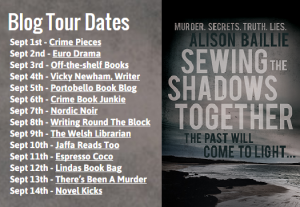 I was looking forward to reading Alison Baillie’s debut novel Sewing the Shadows Together. She and I attended an Arvon course together at the end of 2012. She was working on an early draft of this book and I was finishing In Bitter Chill. We were early readers of each others novels and I was delighted to read the published version. I always felt the book was an excellent mystery with a strong sense of place and it’s great that other readers now have the chance to enjoy the story.
I was looking forward to reading Alison Baillie’s debut novel Sewing the Shadows Together. She and I attended an Arvon course together at the end of 2012. She was working on an early draft of this book and I was finishing In Bitter Chill. We were early readers of each others novels and I was delighted to read the published version. I always felt the book was an excellent mystery with a strong sense of place and it’s great that other readers now have the chance to enjoy the story.
Thirty years earlier 13-year-old Shona McIver was raped and murdered. A man went to prison for her killing but recent DNA evidence has now shown he was innocent. Sarah was a childhood friend of Shona and becomes convinced that the killer comes from a close circle of family and friends. As she battles demons within her own family the secrets of the past begin to unravel.
The mark of a good book for me is a writer’s ability to draw you completely into their world. Sewing the Shadows Together so successfully does this that I didn’t want to put the book down. There’s a strong family element to the narrative and relationships are satisfyingly dysfunctional. Baillie is excellent at showing how old hurts and unspoken suspicions can devastate a family.
I hope readers of Crimepieces enjoy the novel as much as did. I don’t normally interview authors on my blog but wanted to dig deeper into the book so I got Alison to answer some questions for me.
This is your debut novel. What were your motivations for writing crime fiction and how long did the book take to write?
I’ve always enjoyed reading crime fiction and I’ve always dreamt of writing a novel – I wasn’t sure if I could, but there was never any doubt that, if I did, it would be a crime novel! I’ve had the plot of Sewing the Shadows Together fermenting in the back of my mind for many years, but it was only when I stopped teaching full-time that I was able to actually write it down. When I began writing the plot felt quite well-developed, after all these years lingering in my subconscious, so the book took me about eighteen months to write, which was less than I had anticipate. I was very much helped by two Arvon courses and the people I met there!
Your book has a strong sense of place. How much of the book uses real life locations and how much is fictional?
The main locations, Portobello and Edinburgh, the Outer Hebrides and Plettenberg Bay in South Africa are all places I know well. I tried to capture the atmosphere of the places, but not every detail is completely accurate. This is deliberate – I didn’t want people to make assumptions that some incidents and characters are based on real ones and I also made some changes to fit in with elements of the plot.
‘Sewing the Shadows Together’ is an unusual title. How did it come into being?
It’s a quotation from DH Lawrence’s poem ‘Bat’. I remember reading this poem with an inspirational English teacher when I was about thirteen – an incident I have used in the book (but my wonderful teacher is very different from HJ Kidd, my fictional teacher). I chose the title for several reasons: firstly, the poem is about discovering the difference between appearance and reality, an important theme in the book; secondly, the phrase could apply to making sense of the traumas of the past and, finally, I just love the sound of the words.
The book’s focus is very much the past. Why do you think we’re fascinated by unsolved cases?
We all want to solve a puzzle and the longer it has remained unsolved, the more interesting it becomes – it has a greater effect on people’s lives and the ripples extend further. Readers are also fascinated because uncovering secrets in the past is always intriguing and you can scratch the surface of any seemingly perfect life or relationship and discover the cracks beneath.
There’s also a strong emphasis in the book on marriage and the constraints of family. How conscious were you of trying to balance a crime story with focusing on human relationships?
The crime stories I enjoy usually have a strong emphasis on character, motivation and relationships. In this novel I wanted to focus on ordinary people caught up in an extraordinary situation, and how a tragedy in the past affects every aspect of their life, their relationships, their confidence and their self-esteem.
What’s next? What are you planning to write and will it be set in the same location?
I have an idea gestating at the moment and I think it’s just on the point of birth. It is set in Scotland, Yorkshire and Switzerland and involves completely different characters, but once again features ordinary people caught up in a tragic situation and focuses on hidden secrets and relationships.
Thanks to Alison for taking time to answer my questions.


August 21, 2015
Review: Chris Simms – Savage Moon
I’d been meaning to read Chris Simms for a while. His books are set in my 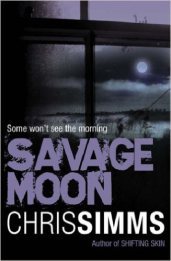 hometown of Manchester and have a reputation of being well-researched gripping police procedurals. It was the author’s appearance at a local festival which finally spurred me into action. Savage Moon is a crime novel with a strong sense of place with an excellent balance between police work and family drama.
hometown of Manchester and have a reputation of being well-researched gripping police procedurals. It was the author’s appearance at a local festival which finally spurred me into action. Savage Moon is a crime novel with a strong sense of place with an excellent balance between police work and family drama.
A farmer’s wife is savaged on the north Manchester moors and her assailant is believed by locals to be a panther roaming the countryside. DI Jon Spicer is sceptical until another victim appears with his throat ripped out in the city centre. The murdered man, Derek Peterson, had previously been subjected to an assault because of his homosexuality. As the locals begin to panic about a wild predator, Spicer finds Peterson’s murky past complicates his investigation.
A moorland setting is an evocative place for crime fiction fans but, although there’s a nod to The Hound of the Baskervilles, the book also feels resolutely northern. Of course, for Mancunians, Saddleworth Moor has a real life resonance due to the atrocities of Ian Brady and Myra Hindley. But Simms cleverly ensures his plot is devious enough to draw the reader completely into his world. As it’s the first book I’ve read featuring Jon Spicer, I can’t comment on how he was as a single man. But the portrayal of him a new parent I thought was exceptional. The tensions between Spicer and his wife were believable and complemented the murder story very well. There’s a colonial element to the plot which stops the book feeling too insular and gave the reader plenty of food for thought.
Savage Moon is a great example of how you can pick up a book mid-series and be drawn into the world that the author has created. A book with a local feel but addressing universal issues.



